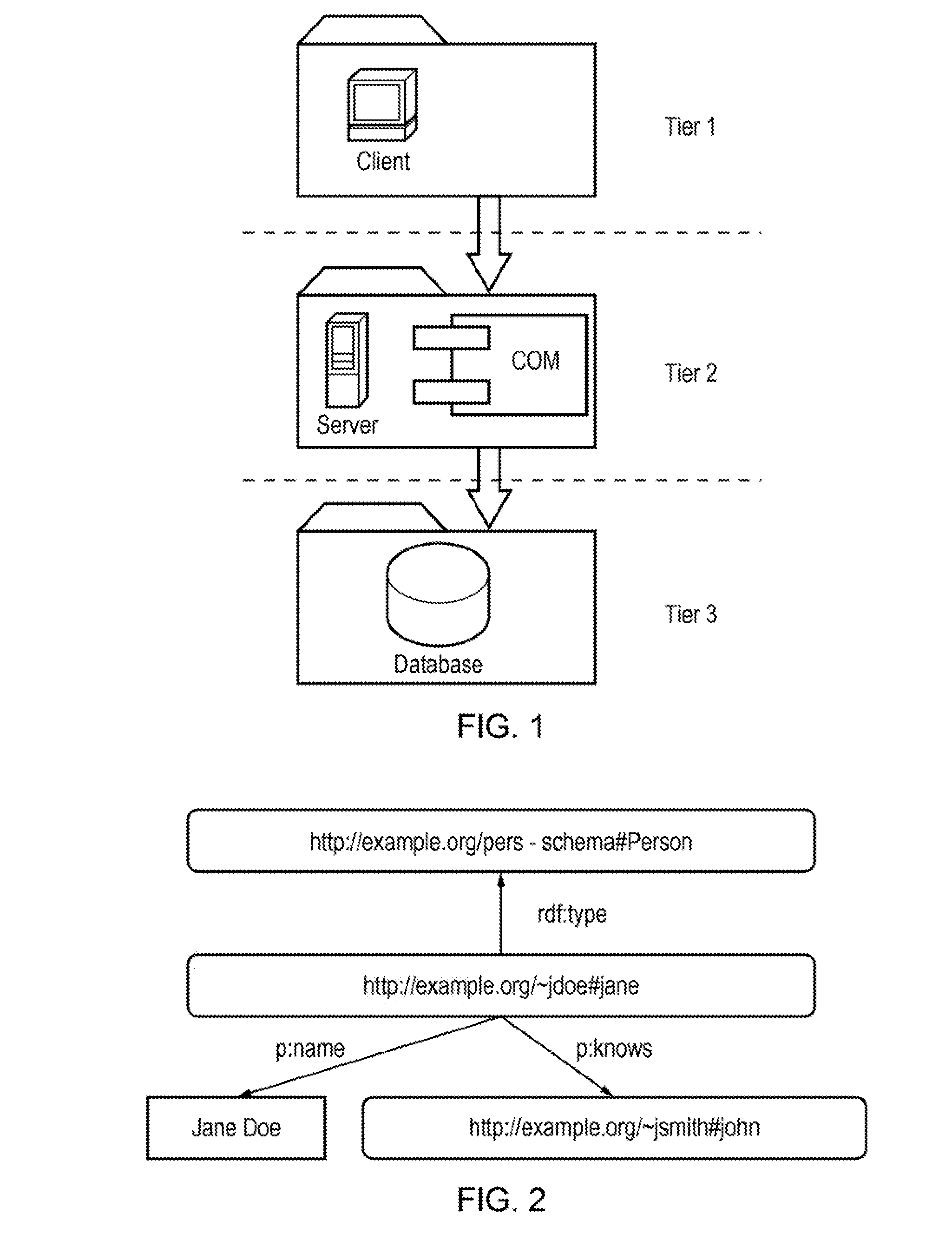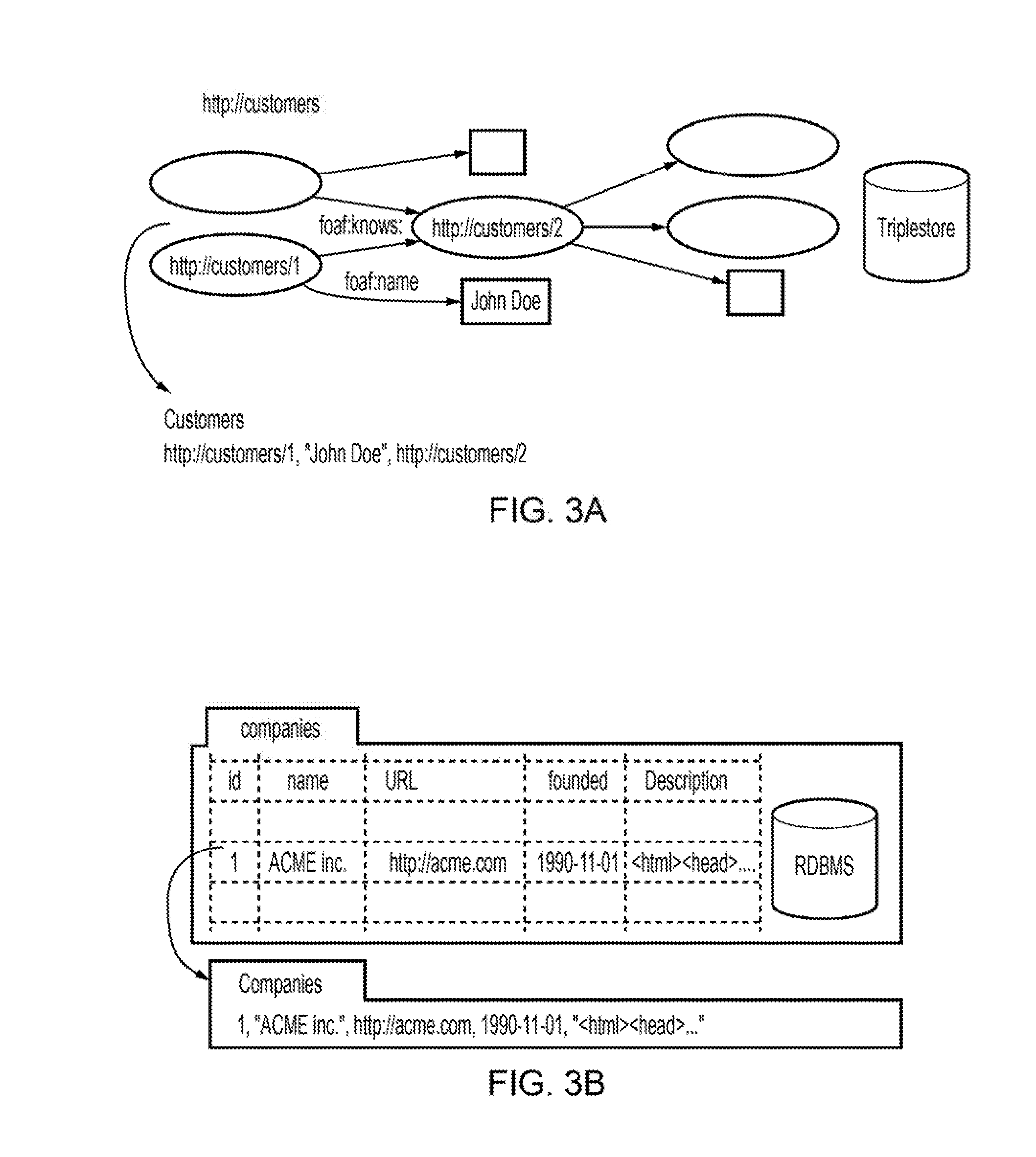Data constraints for polyglot data tiers
a data tier and data constraint technology, applied in the field of data storage, can solve the problems of multi-tier systems progressively drifting away from pure relational back ends, unable to provide data constraints, and current database-specific constraint enforcement mechanisms do not comply with data tiers
- Summary
- Abstract
- Description
- Claims
- Application Information
AI Technical Summary
Benefits of technology
Problems solved by technology
Method used
Image
Examples
Embodiment Construction
[0101]An embodiment of the present invention will now be described by way of example, referring to the Figures.
[0102]This section describes i) the validation constraints model and their creation, ii) the validation engine architecture, and iii) the validation constraint enforcement mechanism. Before describing how constraints are built, the data model used by the constraint enforcement engine will be introduced.
[0103]Embodiments of the present invention adopt a “store-agnostic” model based on the concept of a Record (Definition 1):
[0104]Definition 1: (Record). A Record consists of an n-element tuple of comma-separated values, as shown below:
value1, value2, value3, . . . , valueN
[0105]The constraint enforcement engine considers data as Records, regardless of how and where such information is stored in the data tier (e.g. as relational tables in RDBMS, as graphs in triplestores, as documents in MongoDB, etc).
[0106]To guarantee a storage-independent approach, Records are logically orga...
PUM
 Login to View More
Login to View More Abstract
Description
Claims
Application Information
 Login to View More
Login to View More - R&D
- Intellectual Property
- Life Sciences
- Materials
- Tech Scout
- Unparalleled Data Quality
- Higher Quality Content
- 60% Fewer Hallucinations
Browse by: Latest US Patents, China's latest patents, Technical Efficacy Thesaurus, Application Domain, Technology Topic, Popular Technical Reports.
© 2025 PatSnap. All rights reserved.Legal|Privacy policy|Modern Slavery Act Transparency Statement|Sitemap|About US| Contact US: help@patsnap.com



